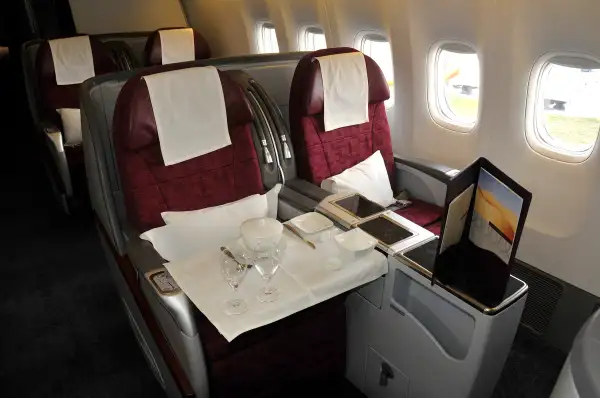Walking Through First Class to Coach Makes Travelers Really Angry

The walk-of-shame through the airplane's first class section to coach isn't fun for anyone. Judging from the lack of eye contact and pursing of the lips when it does happen, the high rollers sure seem to be uncomfortable. And of course the hapless proles are naturally agitated when briefly shown a cushy alternative with free drinks before they face a six-hour hell without legroom, hot towels, or dignity.
While there's no doubt of the world's class systems, the plane places the privileged upper crust and envious commoners in extremely close proximity. According to a new study from the Rotman School of Management in Toronto, this is a recipe for air rage.
Air rage is broadly defined as any airplane disobedience, from Alec Baldwin no-I-will-not-turn-off-my-phone to smoking in the bathroom, and the mere existence of a first-class section on the plane may have an impact. The data collected from a few million flights showed that the presence of a first class meant that air rage was 3.84 times more likely to happen among coach passengers. According to Gizmodo, the researchers say that's the psychologically equivalent to a nine-hour delay.
It gets much worse when passengers have to board from the front and stroll through the promised land. Air rage was over twice as likely on these flights than ones where passengers entered the plane in the middle, with the already boarded elite on the other side of the curtain.
Causality is always a concern on studies like this. Is it actually the physical presence of inequality that causes passengers to lash out and behave badly? Does having a curtain dividing the classes manufacture a self-fulfilling prophecy? The researchers think so—they controlled for all the factors you'd think of, from the legroom to delays.
Read Next: Airline Customer Satisfaction Improves, But Still Has a Long Way to Go
The study's findings seem to recommend boarding from the middle, as it causes far less delays and drama for passengers and airlines alike. This suggestion is also interesting for those looking to bring inequality to the surface—or to stifle conversation. Clearly, there's a sure-fire recipe to get people to notice how the other half lives.